Monstera deliciosa or split leaf philo - what do I have here?
I bought this plant (see photos) labeled 'split leaf philodendron' from a garden center. Prior, I bought a plant from Home Depot that looked exactly like this one, yet was labeled 'monstera deliciosa.' That one has not fared well at all, though there still seems to be the teeniest smidge of life in the stump that's left of it and I do not have the heart to toss it. Fortunately, this new one seems to be doing well and I'd really like to keep it that way. For the life of me I cannot differentiate between the two and in researching I've read conflicting information, which only adds to my befuddlement. I read that these two plants fool even the experts, yet others say to the contrary that the differences are quite apparent. Unfortunately, googling does me no good since basically the same pics come up for both. Please someone help me to identify what I have here so I can care for this pretty baby properly. It seemed freshly watered when I bought it, so basically all I've done is transplant it into this pot with a mixture of new potting soil, river rocks, perlite, and a light dusting of bone meal, as well as this sphagnum moss beam I've made for it, then topped it with a single layer of forest bark. Other than that and giving it a good spray I've left it alone, as I do not wish to stress it out like I believe I did with the other one. Its leaves have been sweating, so I've refrained from watering it at all. The window in the pic by which it is sitting is a NE window. Lastly, I was hoping someone could kindly shed some light on what precisely the differences are between the two plants. Thank you so very much!
PS - I have two pics to share, but it's only allowing me to post one in this message. I will try to post the other in another message.
Here is a link that might be useful: {{gwi:108591}}
Comments (39)
mommachickadee
Original Author14 years agolast modified: 9 years agoHere's the second pic
Here is a link that might be useful: {{gwi:108591}}
Related Professionals
Canton Landscape Architects & Landscape Designers · Severn Landscape Architects & Landscape Designers · Paradise Landscape Architects & Landscape Designers · Stoughton Landscape Contractors · Downey Landscape Contractors · Glendale Heights Landscape Contractors · Hollywood Landscape Contractors · Lake Worth Landscape Contractors · Secaucus Landscape Contractors · Goldenrod Landscape Contractors · Hueytown Landscape Contractors · Lake Elsinore Interior Designers & Decorators · Springdale Handyman · Vienna Handyman · Chantilly Handymanmommachickadee
Original Author14 years agolast modified: 9 years agoThank you for your response, though I am still confused. I've seen others question what they have and they've been told they have one or the other. In fact, one such inquiry is on this site's forum. The member posted a pic asking the same question I'm asking and was told hers is a baby monstera deliciosa and definitely NOT a split leaf philodendron. So if it's the same plant, why would he/she have been told this? Is there a difference or isn't there? I apologize for my ignorance, but I've also found while researching that the two have completely different requirements, which is why I really need to know which one I have. Thanks again.
Here is the first pic I meant to post in my original message.
Here is a link that might be useful: {{gwi:108592}}
tigerdawn
14 years agolast modified: 9 years agoI have one of these and I like it very much. When I first got it from a friend, I put a little package of Osmocote in the pot and it made some leaves. Then a year or so went by with not much growth. It spent the summer on my east facing porch and delt with that ok, but then at the end of the season we had a week of rain. So I put it out on the lawn to get the rain and it immediately put out 2 huge new leaves. I guess it likes being watered, and after reading the blog about it, it makes sense. I had been wondering about how to grow this plant so it would be lush and full. I like all the different suggestions in the blog and I think I'll try to fashion some sort of pole for it to climb up eventually.
dellis326 (Danny)
14 years agolast modified: 9 years agoI went through the same thing with mine. Keep it moist but not wet. make sure the soil will drain fast and at least every once in a while if not often, water it enough to wash out some of the salts and minerals that build up in the soil. Not too much direct sun.
{{gwi:108599}}
mr_subjunctive
14 years agolast modified: 9 years agoI have no idea why someone would say a baby Monstera deliciosa is definitely not a split-leaf philodendron. Whatever the reason, that is wrong.
A baby Monstera might be confusable with a heart-leaf philodendron: could you be remembering "heart-" as "split-?"
There's also Philodendron bipinnatifidum, which is usually called a "tree philodendron" but might, I guess, be called a split-leaf, and that is an actual philodendron which takes different care from Monstera. But it's not something you'd confuse with a baby Monstera, ever.
I dimly recall the thread in question, but I couldn't find it again, so I can't make any guesses as to why someone would say that. Find me a link and I'll come up with a theory.
As to why the two would have different care requirements, I can't really help you there either. Monstera deliciosa is a fairly flexible plant that will stay alive under a lot of different conditions, and as a result people like to stick them in dark corners (guilty of this myself, actually) and otherwise abuse them, so people's advice will vary a lot according to whatever they've personally found convenient.
mommachickadee
Original Author14 years agolast modified: 9 years agoWow, those are some beauties! How are you all posting pics in your messages rather than links? I've tried all the options via photobucket and the only one that wasn't rejected was the direct link. I much prefer the way you are doing it.
Mr Subjunctive,
Okay, here's one of the more recent ones I recall reading. In one of the responses, it is stated that the selloum philodendron is the split leaf philodendron. I can completely understand that, but then why is it the monstera is also called a split leaf philodendron? I guess that is why I am so thrown off by this. I see the selloum and can clearly tell the difference between that and the monstera, as it has long thin almost spiky looking splits. In other threads, which I can't seem to locate at the moment, I've seen pics of what look just like my plant labeled either split leaf philo or monstera - indicating a difference. I've also seen people adamantly claim such things as, "That is definitely NOT a split leaf philo, it's a monstera," and the like. So this is why I am so very, very confused. When people say there is a big difference between them, I am unsure if they are talking about the selloum and the monstera (which again, I do comprehend) or something else ??? And as far as the different care, I've read and even been told by garden centers that the monstera absolutely must be near a window and receive bright light, whereas a split leaf philo can be 4 to 8 ft away from a window, even in a somewhat dark corner. Well, my plant has been labeled both, so which do I follow? Yikes! This is why I am trying diligently to figure out which I have so I can accomodate it properly. If there is no differece as you say, then can my plant be moved to a corner opposite the window where it's currently located? Or should it be left right where it is? Thanks so much for your patience. By the way, I have been to your blog quite a few times and am just now realizing this is you. You crack me up! I particularly enjoyed the piece you wrote about fake plants. Love your sense of humor :)Here is a link that might be useful: monstera vs philo thread
mr_subjunctive
14 years agolast modified: 9 years agoWell, first things first: the best place for your Monstera would be near a window, and my personal recommendation would be for an east or west window, but as long as it's not south you're probably okay. (Too much sun on an indoor Monstera deliciosa = bad; full sun on an indoor Philodendron selloum = good) It'll stay alive if it's away from a window, but neither of you will be happy about the way that goes in the long run.
As far as people labeling plants differently, that's just people. People use the common names or botanical names according to which they're comfortable with, and it's not usually a problem, but sometimes there's more than one common name for a plant, more than one plant has the same common name, or whatever. In this case, the botanical name for one genus (Philodendron) has become part of the common name for another genus ("split-leaf philodendron"), something which doesn't happen very often and which causes Laurel-and-Hardy-scale wackiness when some people naturally assume that "philodendron" = Philodendron.
The whole "philodendron" thing actually gets much, much more confusing than this, I've discovered in the course of trying to reply to you, so I'm going to turn it into a blog post for this Wednesday at PATSP.
Oh, also: I've never been able to get the hang of posting pictures directly in posts either.
mommachickadee
Original Author14 years agolast modified: 9 years agoOh thank you a million times, Mr Subjuncive, for clearing this up for me (and likely many others out there)! You had mentioned swiss cheese philo earlier and I just wanted to add that, like the selloum, that plant looks completely different from the monstera, too. To my eyes, anyway. It surprises me that people use the common names so interchangeably like that. Methinks it would have made better sense to have just given the common name of split leaf monster or something along that line - anything would have been better than throwing a whole other genus in there and confusing people like me. Ah well, at least I know and understand now. By the way, when I transplanted the new plant I also planted the stump of my previous plant in there with it. I hope that was not a bad move. It's literally just a stump, an inch at the most, but it's still green and has a good solid root system.
Okay, last question: when should I finally water? As I mentioned earlier, I haven't done anything other than spray its leaves. I'm scared to pieces of root rot in general, so I'm never one to overwater, but I don't want to be guilty of underwatering, either! I'm trying unbelievably hard not to go anywhere near it, because I do believe that all my fussing is what caused the other to become just the stump it is now. I'm ashamed to even go into all that I did to it - I didn't overwater it, but I definitely fussed with it far too much (transplanting it, then taking it out to add river rocks, then taking it out once again to add a climbing pole, constantly rearranging its stems/leaves, adding ties to attach its stems to the pole, etc. etc. etc.) until it ultimately collapsed screaming ENOUGH! I was in utter dismay. Therefore, my husband and children have been told to stop me if I'm even so much as looking at this plant too long, because that usually means I'm being tempted to do something to it and I absolutely do not want to lose this guy. So...what is the telltale sign I'm looking for that it's thirsty? Its leaves are still sweating, but only very slightly now.
Thanks again! I look forward to Wed's blog. I can just imagine how it will go. (Just don't mention my name in there, hahaha!)
jonvanzile
14 years agolast modified: 9 years agoThat's definitely a monstera ... and a nice young one with the typical juvenile leaf form. They don't get the deeply split leaves and characteristic Swiss cheese holes down the central leaf rib until they start putting out mature leaves (like Tiger's), which truly can measure 3.5 feet across and 4 feet long. You'll know it's thirsty when the leaves start to sag and lower a bit. These are rainforest plants, so as long as your drainage is immaculate, they are adapted to handle a lot of water. Mature plants can be acclimated to nearly full sun, although younger ones appreciate bright, but indirect, light. All monstera like high relative humidity.
I've read in many places that monstera will climb a moss pole, and even gone so far as to attempt coaxing a monstera up a pole ... but outside of greenhouses, I've never actually seen it done. I suspect that the moisture level in the pole is too low for the roots to adhere, but I have nothing to base that on other than experience. These can handle temperatures down to about 50, provided it's not for very long, but they will stop putting out new leaves.
mr_subjunctive
14 years agolast modified: 9 years agoWhat jonvanzile said.
I've never seen them actually climb anything on their own either. Clearly the heat and humidity of a tropical environment is important.
dellis326 (Danny)
14 years agolast modified: 9 years agoYeah, mine doesn't climb. It would spread out accross the floor if left to it's own devices. Every couple of months, I have to tie it to that bamboo pole.
tigerdawn
14 years agolast modified: 9 years agoTo post a picture directly from photobucket I do the following:
Open Gardenweb in one window and type my post up to where I want to insert the picture. Go down a couple of lines.
Open Photobucket in another tab/window
Position the cursor over the picture I want to insert. There will be a drop down box with 4 options.
The third option is HTML code. I move my cursor over that code box and click once. It highlights in blue.
Press Ctrl + C to copy the text in the box.
Switch to Garden web, make sure your cursor is still where you want the picture to go, and press Ctrl + V to paste.
A paragraph of jibberish will appear on the screen. To make sure you have it right, just click the Preview Message button.
emerald1951
14 years agolast modified: 9 years agoHi really like the split leaf phil.....looks very healthy and happy....
love the lab.....
meet my lab...Diesel....
{{gwi:108601}}
he's a big sweet heart...
linda
Opps hope you don't mine me posting his pic here...mommachickadee
Original Author14 years agolast modified: 9 years agoOooooh, I get it now - the html has to be posted directly into the message box! I was using the link url box, which would explain why it wasn't accepting anything other than a direct link. Thank you! I am going to try...
And since we're posting pics of our pooches, here's my english bully boy :)
{{gwi:108602}}Now, as far as keeping moss stakes moist...does anyone have any good recommendations for that??
emerald1951
14 years agolast modified: 9 years agoHi...He's a cutie...
I love these philly's split leaf...
you've all convinced me...I will have to get me one of those....;)
lindatigerdawn
14 years agolast modified: 9 years agoTuvok's actually a Great Dane but his head isn't very typical. Personally, I like his face better than most other Danes.
I was wondering how to keep a monster pole moist as well. I'm the type of person that would rig up a drip system with a milk jug and a bird feeder pole. But is that the "best" way? LOL!
mommachickadee
Original Author14 years agolast modified: 9 years agoThought I'd add a little update here on this plant. Check out what I found yesterday during an inspection. I was rather excited to see a root growing into the moss stake. I guess there's no taking the stake away from it now, haha.
And here's another interesting pic of a root growing into the soil. Just the other day that root was nowhere near it. I'm utterly amazed at how quickly this thing is growing!
bruno1
14 years agolast modified: 9 years agoHello all. I've a question--it's springtime, I've an indoor split leaf plilo (monsterosa) that just peaked it's 10th birthday, and also decided to yield a great handful of blooms from each of its three base roots for the first time. I think it's now a happy mature adult.
My questions revolve around repotting, and if it's time to give the guy some extra support with a stake/pole (or if one is even needed, as there are mixed opinions it seems). The leaves of course sprout high and full; but it's the base that, once viewed up close-is actually quite fragile, with breakage possible if disrupted. Personally I wouldn't classify it as a climber, as each of the three central sprouting bases have only grown upward at a max 8-10 inches in it's lifetime. But one did snap on me a while back, which I quickly repotted in the same pot and thankfully it did fine.
I do know repotting will be a multi-person job, and will likely involve the plastic pot to be sliced, as it's certainly outgrown the pot. The overall span of my guy (I refer to him as this :)) is about 8 feet in length, w/ the new sprouting leaves in constant competition, the highest arm at 4 feet. He's quickly always the topic of conversation for visitors. To avoid any potential for breakage either when repotting or as it continues in general, any step-by-step suggestions? It's never had a pole or stake to this point either, and I'd rather it not.
It's good to read that people are in the know about softer direct light being fine (eastern sunrise light, sunset light, etc), as mine always gravitates to these windows; the rest it receives through extremely sheer curtains. I'd upload some pics but lost patience trying to do so :). Repot help?
nonnie1
13 years agolast modified: 9 years agohi bruno1, i was just reading your post and you might have better response if you post a new post, this seems to be an old site. don't really know just guessing it may not be seen here.i only saw it because i was looking for answers also. sounds like you have a fantastic plant,really looking forward to seeing a pic.on garden web(new postings)
exoticrainforest
13 years agolast modified: 9 years agoAgreed, this is an older thread but your question can still be answered.
In Central America and Mexico Monstera delicosa is definitely a climber. They can easily grow to 30 feet or higher in the rain forest, typically on a creek or river bank.
If your inflorescences are pollinated they will produce a very tasty fruit that is like a mixture of pineapple and strawberry. Once it is fully mature (about 10 or 11 months and turning yellow), you can peel off the outer portion which should not be eaten to find the tasty fruit as the second layer. It is perfectly safe to eat and we eat every one we can grow.
Our plants live in NW Arkansas inside a temp controlled tropical atrium and are just now beginning to produce the spathe and spadix. About 10 months from now we will eat them all. They also are now growing up a tree in the atrium and have reached a height of 12 feet with still four additional feet to climb.
There is almost no relationship between a Monstera species and a Philodendron species other than both are aroids. Sexually all 35 known species of Monstera produce perfect flowers (very tiny) on the spadix at the center of the inflorescence. Those perfect flowers possess both male and female flowers and in some cases are capable of self pollination. The spathe itself is not a flower but is only a modified leaf.
All Philodendron produce near microscopic imperfect flowers with only a single sex. The female flowers grow inside a hidden female floral chamber at the base of the inflorescence and the male flowers grow higher on the spadix. Nature has designed Philodendron to require the aid of an insect pollinator since the female flowers are receptive for only one day and that happens the day before the male flowers begin to produce pollen. Nature did this brilliantly to keep the species strong. There are also close to 1000 species of Philodendron (many not yet identified according to Dr. Tom Croat at the Missouri Botanical Garden) while at present there are only 35 accepted species of Monstera.
There are other major differences in the two genera and I am certain most people that might read this will have no interest in knowing. One is Monstera possess a geniculum at the top of the petiole that allows a leaf to rotate to some degree to gather additional light just like your knee or elbow. Philodendron never possess this capability.
The name "split leaf" Philodendron should be entirely dropped from horticulture since it is very deceiving as well as confusing.
These plants need very fast draining soil that will not stay soaking wet. It is best to take a soil such a as moisture control mix and add at least 30% peat moss, a good helping of orchid bard or coconut husk (or both), Perlite and anything you can find that is similar to a good compost. The trick is to keep the roots damp but never soggy.
They also appreciate very bright light, just not direct sunlight although I have personally seen them growing in South Florida many times in nearly direct light, the main problem is the leaves will yellow.
Steve
exoticrainforest
13 years agolast modified: 9 years agoBruno, you may find the info at this link helpful.
Steve
gravyboots
13 years agolast modified: 9 years agoExotic Rainforest, I checked your link above & thought you might be just the person to answer my question! Your contributions to this thread have been excellent & helpful.
I was a nursery in Alabama & came across the most incredible dark red or "black" monstera; it flew home with me & has been making it, but not thriving, for 5 years or more.The leaves start out very spear-shaped (vs. heart-shaped) and greenish, then turn deep burgundy and resemble young deliciosa leaves as they (the "black" leaves) mature. The plant is growing on a make-shift trellis & is somewhere around 4' long/tall, with new growth at the base & vine tips.
Any clue what kind of monstera it might be? Might it's light & other growing requirements be different from my deliciosa? They are pretty happy, while this plant seems to just be getting by.
Thanks for your help & I understand that since this is an older thread, it may take a while for an answer, but that should be no problem :)
greenman28 NorCal 7b/8a
13 years agolast modified: 9 years agoBy the way, Exotic Rainforest (Steve) is in Miami at an Aroid convention, I believe...
So definitely give him a few days for a response.Josh
gravyboots
13 years agolast modified: 9 years agoThank You Josh!
As I was perusing the Exotic Rainforest site, I thought I might actually have an Ace of Spades phil, but no cataphylls & the new leaves emerge directly from the petiole - 100% monstera, should've trusted my gut.... But, the new leaves look very much like the Ace of Spades leaves.
exoticrainforest
13 years agolast modified: 9 years agoWe are just home! Can you post a photo of the plant? I am also curious why you believe it is a Monstera? There are currently only 35 known species of Monstera and many plants sold as Monstera species are actually from Asia, They are in related families but are not in the genus Monstera. The genus Monstera is only found in southern Mexico, Central America and parts of South America. Lots of folks on eBay put the name "Monstera" on any plant with a hole in the leaf or with pinnate leaf margins.
I'll be checking back on this but right now I'm totally out of steam! You guys should have all been with us in Miami at the IAS show! I saw people buying $500 or more in aroids and they had great big shopping carts filed to the brim.
Me, all I came home with was a very unusual Anthurium with palm-like leaves and a plant from Ecuador that may very well be a brand new species! It will take time to prove it either way but it is always fun looking through the boxes that come from Ecuador (legally of course)!
Steve
gravyboots
13 years agolast modified: 9 years agoThanks for asking Steve!
I think it's Monstera because that's the extent of my knowledge & it has a remarkably similar habit.However, there may be something to the Asian relative angle, since the owner of the nursery was a home decor importer we did business with who spent quite a bit of time in China.
What IS the genus for these related plants? What type of subtle differences should I look for? The leaves do not split (yet?), nor grow to the size of deliciosa leaves; the largest they seem to get is the size of young deliciosa leaves. The emerge directly from the petiole & don't have the ghosty tissue like a phil.
Is it possible to post pictures without opening up another new account someplace? I don't do any on-line photo storage, except on facebook....
gravyboots
13 years agolast modified: 9 years agoThis isn't my picture, but this is my plant! Mine is much leggier though.
Thank You Sleekit... whoever you aregravyboots
13 years agolast modified: 9 years agoI finally figured out how to link to pics of my plant....
Sleekit's (previous link) ID's were Elephant Ear (from plant seller) and a Black Cardinal phil (from his/her internet searching), but I'm not confident in the Black Cardinal ID because:1) my plant just doesn't look like any of the BC pictures I saw online (although they could be mis-identified)
2) small details I tried to capture in my photos such as:
geniculum ridges
petioles flatten on the top near leaves, like my deliciosa does
definite angles at edges of flat areas of petioles
total absence of cataphyllsPenena_Veneroso
11 years agolast modified: 9 years agoI bought a split leaf 2 years ago at a yard sale for $2. When I got it, there was only 2 small leaves. Since then, I would say it is about 3 1/2 - 4 ft tall and about 7-8 ft in diameter. There are so many leaves:) I love it, but I need to prune it back some because after I transplanted it into a new pot, the leaves are pointing in different directions and some of them are upside down now. I have tried to prop them up to face the right way, but I am afraid of breaking the thin stock. For some reason, their branches are thicker than the base. So, how would I go about pruning the leaves back? Do I just cut them where I would want it, or is there a certain spot on the branch, base, or what I call (conjunction-a cluster of branches from one place)? I won't do anything to it until I know it won't hurt it. This thing likes to grow fast!!! I can almost guarantee that I won't be able to find this place again on the web, so if you know the answer to my question, please email me at cpenena@hotmail.com. Very much appreciated.
lclemons
10 years agolast modified: 9 years agoI inherited an enormous tree philodendron selloum. I live in NJ and our winters are too cold for it to survive outdoors. So a few years I stored it In a nursery all winter but it is costly. I have some room inside but must removed all its leaves in order for it to fit. It grew even more in the summer. It is much bigger now. I just removed the leaves and put it in its place for the winter. If you own such a tree, how do you care for it during the winter?
tropicbreezent
10 years agoYou can't grow a cutting from these in the normal way you do with other Philodendrons. Whatever cutting you take must already have some root system. But that's the way you can downsize it so that it fits in (for a few more years at least). Of course the other alternative is to move into a larger house.
Tiffany Darden
7 years ago
Hello! Stumbled across this discussion while trying to locate information to positively ID this plant which is being sold on eBay (for about $20). It was stated this was a cutting of a variegated Monstera deliciosa, but at a glance, it appears very similar to the variegated philodendron that is commonly sold as a houseplant. I contacted the seller who insisted (rather rudely, I may add) that it was undoubtedly Monstera and was told that the leaf cuts do not appear on young plants. The seller suggested I 'Educate myself' before asking such questions, so I am here in an effort to do so. What do you think?
goldstar135
7 years agoI can't help you much with giving you a definite ID of the plant, but personally, if I was considering buying from that seller and if they responded "rather rudely" to my questions, I would just simply not give the seller my business and close the tab.
Tiffany Darden
7 years agoAgreed. I suppose they were offended by my suggestion that they may have incorrectly identified the plant. They also provided me with this information:
"This
is not a Heart Leaf Philodendron. It IS a Monstera Deliciosa. The
leaves are very much larger than Philodendron Scandens Oxycardium, the
Heart Leaf. I own the parent plant, from which this is a cutting. It is a
very large plant, 3 feet high, with the characteristic leaf splits. AS
NOTED in the listing, the juvenile form of Monstera Deliciosa does not
have the leaf splits. They are however larger leaves than the Heart
Leaf. The leaves on this young plant, though nowhere near full size, are
a good 6 and 7 inches long, much bigger than the Heart Leaf.Please
check out other young Monstera Deliciosa plants on eBay. The juvenile
form looks like this. EDUCATE YOURSELF before complaining."dellis326 (Danny)
7 years agoThis is not considered a rare plant. Find a different vendor.
For future reference, the leave split as they get bigger, often at around 8 to 10", sometimes more, sometimes less. The leaves can end up more then 18-20 inches and will grow as tall as space permits. Mine is easily around 6 feet tall, would be more but it broke off once a few years back. so basically, its a big plant.
tropicbreezent
7 years agolast modified: 7 years agoIn fact, if let go in the right conditions they'll easily get up over a 2 storey house.
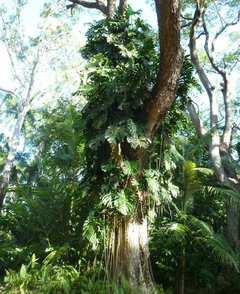
Phoenix Construction
5 years agoA monstera deliciosa may be called a split leaf or cut leaf philodendron. As pointed out it is not a Philodendron. The reason people should stop referring to it as such is because there is an actual cut leaf Philodendron and it's not the same thing.

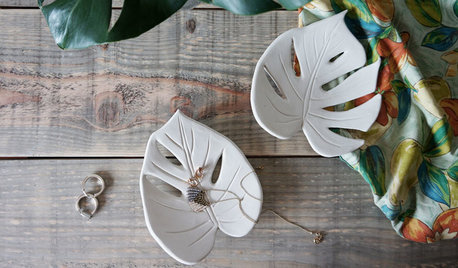





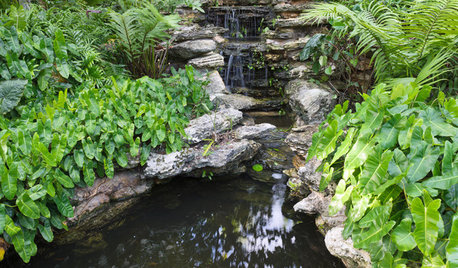
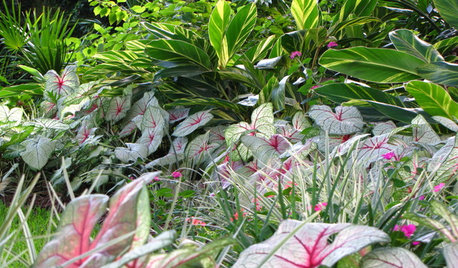
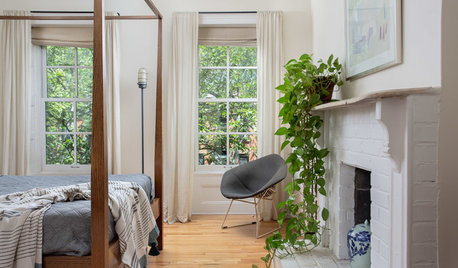









mr_subjunctive